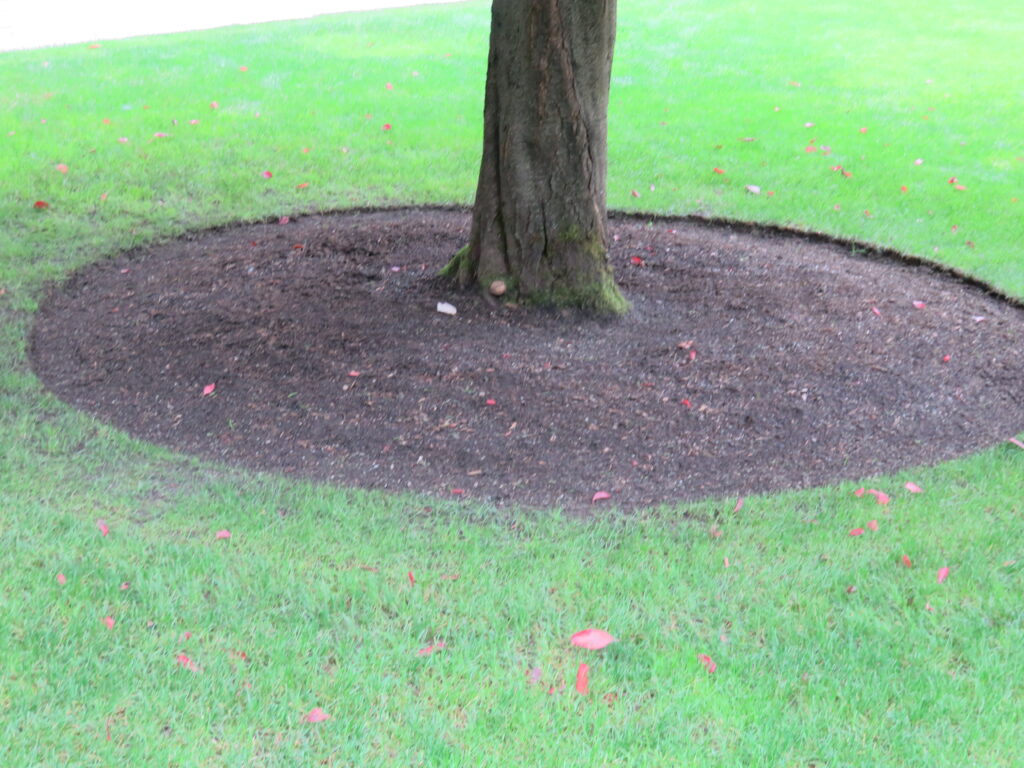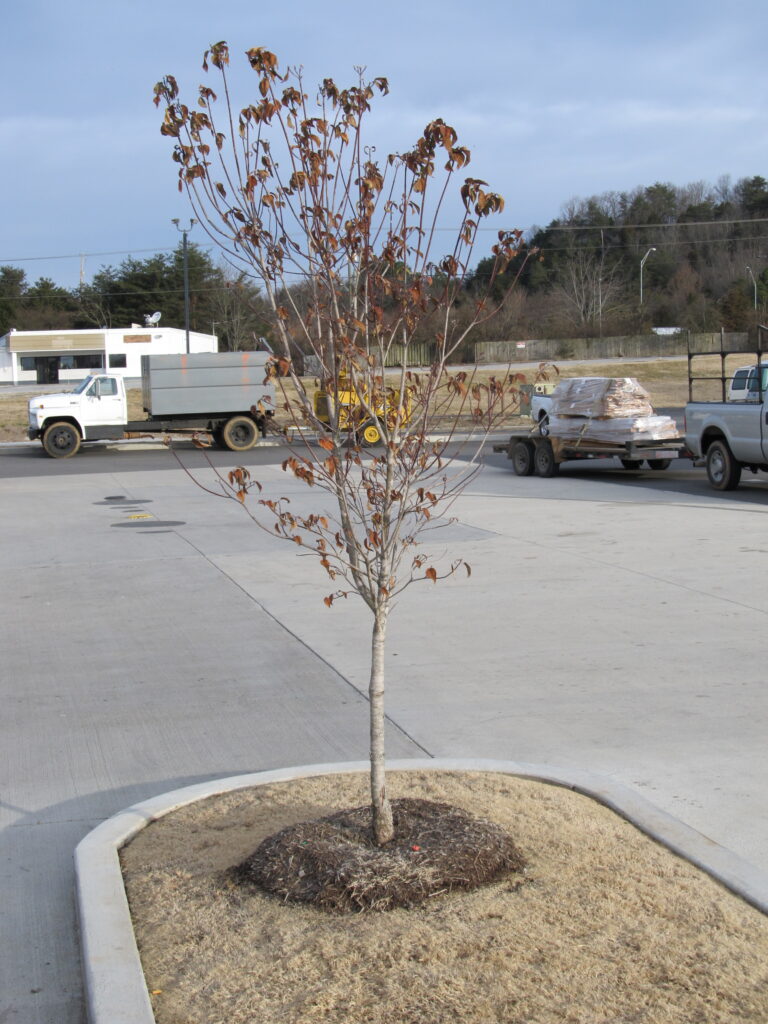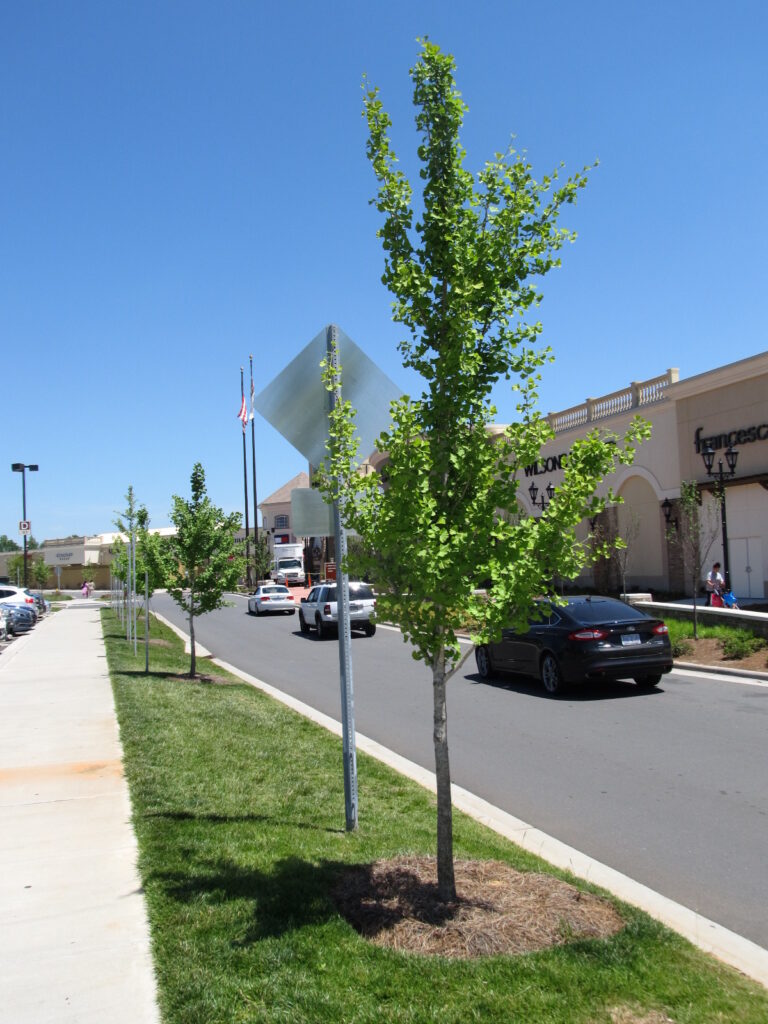
The loss or decline of a newly planted tree or shrub is usually a result of multiple factors. One of the worst mistakes is planting trees or shrubs too deeply – whether they are planted by a home gardener or a landscape professional. I’ve witnessed both. Surface roots are deprived of oxygen the deeper trees are set into the ground. Less oxygen leads to slower growth and eventual root death. Burying the trunk deeply makes the bark more susceptible to attack from diseases or insects which can bring about the demise of a plant.
Nursery trees and shrubs, whether balled and burlapped (b&b) or container grown, should be set (planted) at the same depth they were growing at the nursery or in the container. The tree may also be covered over with too much mulch.
Many container-grown trees and shrubs are frequently grown in a soilless organic media such as bark, composed wood fiber, and /or peat moss. Over time the organic media will subside or reduce in volume. At the garden center or nursery, plants may be buried by soil or mulch piled up around the container to reduce irrigation and keep roots cool.

Before planting, look for the tree’s root flare which should be at or above the ground surface. It should appear clean and healthy with no cuts or injury. Avoid planting too deeply. Young trees may have little or no root flare and more evident on larger woody specimens.
B&B Tree planting steps:
1. Remove all strapping, twine or ropes from around the trunk and roots of the tree. Over time, the straps may girdled the trunk and result in tree death.
2. Next, remove the burlap, particularly synthetic burlap, from the top of the root ball and find the root flare of the tree to determined proper planting depth. This may be several inches below the soil surface.
3. Dig a shallow hole deep enough and 2-3 times the width of the root ball. Set the tree so the root flare is at or slightly above the soil surface. Do not dig deep holes. Refill the hole to the proper height will result in settling of the tree to a deeper improper depth over time.
4. Place the tree in the hole and at minimum remove all-natural cloth (jute) burlap. The burlap will wick moisture out of the soil if it is visible above the soil. Also, remove as much of the wire cage as is practical. Remove the wire basket (cage) or at least the top third. Remove all synthetic burlap whenever possible.
5. Fill the hole surrounding the root ball and pack the soil firmly around the ball to stabilize the tree. Gradually, refill the hole making sure no air pockets remain in the backfill. Do not add soil amendments (compost, manure, bagged “soils”, etc.) to the planting hole. Only soil that was removed from the hole should go back in.
6. Mulch to a depth of 3-4 inches with a coarse mulch a such as wood chips, pine bark or pine needles.
7. Water in the tree with a minimum of 5 gallons of water as weather every 2-weeks if rainfall is less than 1-inch weekly. Irrigation removes most soil air pockets and firms the soil around the roots.
8. Staking is unnecessary unless the planting site is excessively windy. The stakes and straps should be removed after 2-3 years.


 Posted in
Posted in 
